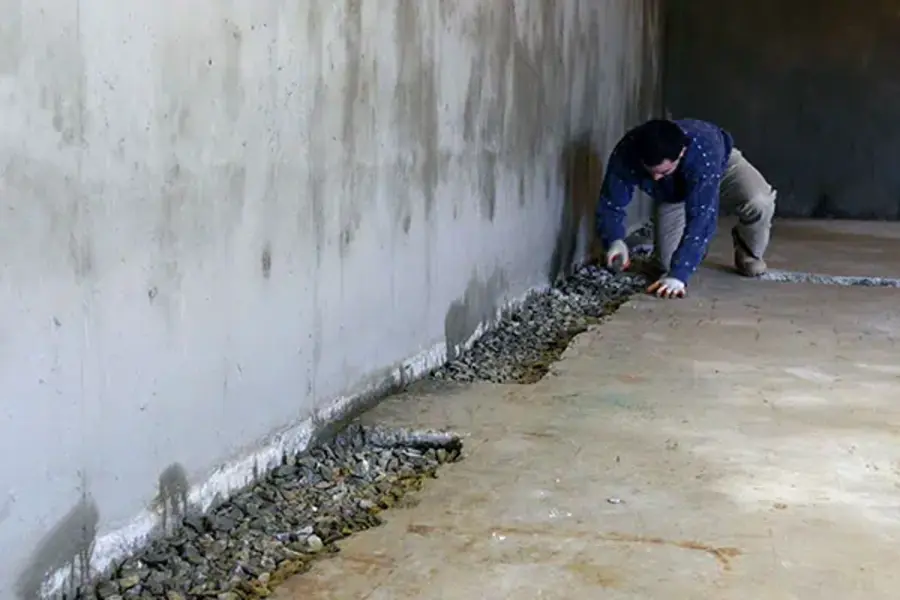A basement can be a valuable part of a home. It provides extra storage, living space, or even a cozy retreat. However, basements are also vulnerable to water damage. If not properly waterproofed, they can become damp, moldy, and unsafe. Waterproofing your basement is essential to keep it dry and protect your home’s foundation. In this article, we will explore 101 simple tips to help you keep your basement dry and safe.
Understanding Basement Waterproofing
Basement waterproofing is the process of preventing water from entering the basement. Water can seep through cracks in the foundation, walls, and floors. Poor drainage can also cause water buildup. By using proper techniques, you can reduce moisture and prevent long-term damage.
Why Basement Waterproofing is Important
A wet basement can lead to several problems. Mold and mildew can grow, causing health issues. Water can weaken the structure of your home. Your belongings can be damaged. A dry basement helps maintain the value of your home and provides a comfortable space.
Common Causes of Basement Water Problems
Before waterproofing, it is important to understand the causes of basement water problems. Here are some common reasons why water enters a basement:
- Poor drainage around the house
- Cracks in the foundation
- High groundwater levels
- Plumbing leaks
- Improper grading of the land
- Clogged gutters and downspouts
- Faulty sump pump systems
101 Tips for Basement Waterproofing
Here’s the full list of 101 tips for keeping your basement dry and safe:
Exterior Waterproofing Tips
- Check the grading of your land – The ground should slope away from your home.
- Install proper drainage – French drains can help direct water away.
- Clean gutters and downspouts – Leaves and debris can cause clogs.
- Extend downspouts – Water should be directed at least five feet away.
- Seal foundation cracks – Use hydraulic cement or epoxy for small cracks.
- Apply waterproof coatings – Exterior walls should be treated with a waterproof sealant.
- Install a rain garden – This helps absorb excess water.
- Use gravel around the foundation – It allows water to drain away easily.
- Check for leaks after heavy rain – Regular inspections help prevent issues.
- Consider an exterior waterproofing membrane – It adds extra protection.
Interior Waterproofing Tips
- Inspect basement walls regularly – Look for signs of dampness.
- Seal interior cracks – Use waterproofing products designed for interior walls.
- Paint with waterproof coatings – Special waterproof paints can help prevent moisture.
- Install a dehumidifier – Reduces humidity and moisture.
- Improve ventilation – Use fans to circulate air.
- Use moisture-resistant flooring – Avoid carpets in damp areas.
- Keep furniture away from walls – Air circulation prevents mold growth.
- Store items in waterproof containers – Protect valuables from moisture.
- Use desiccants like silica gel – Helps absorb moisture.
- Avoid overwatering plants near the basement – Excess water can seep into walls.
Sump Pump Tips
- Install a sump pump – Removes excess water from the basement.
- Test the sump pump regularly – Ensure it is working.
- Keep the sump pump pit clean – Debris can block the pump.
- Have a backup power source – A battery-powered backup helps during a power outage.
- Consider a second sump pump – Extra protection in high-risk areas.
- Make sure the discharge line is clear – Clogs can lead to basement flooding.
- Replace sump pump if needed – Lifespan is usually 7-10 years.
- Install a sump pump alarm – Alerts you in case of malfunction.
- Use a sump pump cover – Prevents debris from entering the pit.
- Ensure the pump hose is correctly placed – Direct water away from the home’s foundation.
Drainage System Tips
- Install an interior drainage system – Helps redirect water.
- Use gravel around pipes – Prevents clogging.
- Check drain pipes for blockages – Regular maintenance prevents water buildup.
- Inspect drainage after heavy rainfall – Make sure everything is functioning.
- Keep storm drains free of debris – Prevents flooding.
- Use perforated pipes for better drainage – Allows water to flow away efficiently.
- Ensure downspouts direct water far from the foundation – Prevents pooling.
Preventing Mold and Mildew
- Keep humidity below 50% – Mold thrives in moist environments.
- Use mold-resistant products – Paints, drywall, and insulation.
- Clean and disinfect regularly – Prevents mold spores from spreading.
- Replace damp insulation – Keeps walls dry.
- Avoid wallpaper in the basement – Can trap moisture.
- Install proper air circulation vents – Helps keep mold away.
- Consider using a HEPA air purifier – Removes mold spores from the air.
- Dry wet areas immediately – Prevents mold from forming.
- Check for musty odors – Sign of potential mold growth.
Additional Tips for a Dry Basement
- Use waterproof rugs – Helps reduce moisture absorption.
- Do not store cardboard boxes in the basement – Cardboard attracts mold.
- Install proper insulation – Keeps walls and floors dry.
- Check for water leaks in pipes – Fix leaks immediately.
- Do not hang wet clothes in the basement – Increases humidity.
- Ensure proper air circulation – Fans and vents help keep air moving.
- Maintain heating and cooling systems – Prevents moisture buildup.
- Repair any broken seals on basement windows – Prevents water from entering.
- Use waterproofing sprays for wooden furniture – Protects from moisture damage.
- Keep basement lights on for part of the day – Helps dry the space.
- Install water leak detectors – Alerts you if there’s a leak.
- Use waterproof caulking around pipes and floor joints – Prevents seepage.
- Check for rust on metal items – Can indicate excessive humidity.
- Keep electrical outlets protected – Moisture can damage wiring.
- Use vented covers on basement drains – Prevents unwanted clogging.
- Place moisture-absorbing pouches in storage areas – Prevents dampness.
- Use waterproof paint on basement floors – Adds protection.
- Install a vapor barrier – Prevents moisture from rising through the floor.
- Upgrade basement windows to energy-efficient models – Reduces condensation.
Long-Term Basement Maintenance Tips
- Check basement corners for pooling water – A sign of leakage.
- Perform seasonal checks on waterproofing materials – Reapply if necessary.
- Upgrade old drainage systems – Ensures better water flow.
- Monitor your basement after heavy rains – Look for new leaks.
- Ensure sump pump hoses remain properly connected – Prevents flooding.
- Use basement-safe heating systems – Reduces humidity.
- Keep records of any waterproofing repairs – Helps track maintenance.
- Hire a waterproofing expert every few years – A professional check ensures safety.
- Remove unnecessary items – Clutter can trap moisture.
- Repair any shifting in the foundation – Prevents cracks and leaks.
Final Tips for Basement Waterproofing Success
- Install a basement water alarm – Early warning system for leaks.
- Use water-resistant concrete sealers – Extra protection.
- Ensure basement doors have proper seals – Prevents moisture seepage.
- Replace worn-out sump pump parts – Keeps the system efficient.
- Keep track of moisture levels – Use a hygrometer.
- Upgrade basement walls with waterproof materials – Lasting protection.
- Ensure pipes are properly insulated – Prevents condensation.
- Avoid heavy carpet in basements – Carpets trap moisture.
- Check for condensation on basement windows – Indicates high humidity.
- Use a waterproofing contractor for major repairs – Expert solutions.
- Keep furniture elevated from the floor – Prevents water damage.
- Consider heated flooring to reduce moisture – Prevents cold damp areas.
- Use a basement-specific air circulator – Improves ventilation.
- Upgrade basement lighting – Bright spaces feel drier.
- Opt for waterproof storage solutions – Plastic bins instead of cardboard.
- Check for wall bubbling or peeling paint – Signs of water damage.
- Use silicon-based waterproofing materials – More durable than standard coatings.
- Ensure sump pump hose exits properly – Prevents flooding.
- Inspect ceilings for leaks from upper floors – Prevents slow water damage.
- Monitor humidity levels monthly – Prevents unnoticed moisture buildup.
- Check for musty smells – Early sign of water trouble.
- Use mold-resistant adhesives in repairs – Protects long-term.
- Seal door and window gaps – Prevents damp air entry.
- Inspect plumbing yearly – Fix leaks immediately.
- Keep basement walls dry by improving airflow – Reduces damp spots.
- Commit to long-term waterproofing efforts – Consistency is key!
A dry basement means a healthier home. With these tips, you can keep your space safe, dry, and protected for years. Need help with a specific method? I’m here to assist!
Final Thoughts
Basement waterproofing requires regular maintenance and inspections. A dry basement improves the comfort and safety of your home. By following these 101 simple tips, you can keep your basement dry and free from water damage. Whether you use exterior waterproofing techniques, install a sump pump, or improve ventilation, taking action now will help protect your home for years to come. Keep your basement safe, dry, and ready for any use you desire.

